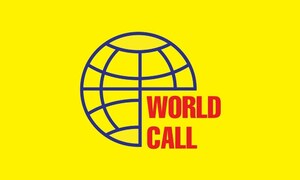ARTICLE: The Economic Adviser's Wing (EAW) of the Ministry of Finance has published the Monthly Outlook for July 2020. This is a new report series which was started in March 2020. It is a useful source of information on short-term trends in the economy.
The report demonstrates that on the basis of comparison of an economic magnitude with the previous month level, there is clear indication of a process of recovery in June 2020 in the aftermath of the spread of COVID-19. Key indicators including exports, remittances, foreign direct investment, and the stock market are all showing positive growth in June 2020 relative to the level in May 2020.
The report goes on to assert, first, that the GDP growth rate in 2019-20 of negative 0.4 percent is valid. Second, if the rising trend continues, Pakistan may resume positive growth in coming months with respect to the level in the previous year. Third, inflation may stabilize or gradually case in coming months. Fourth, the report is optimistic that the current account deficit will remain within the limits of the external financing constraint.
There is need to emphasize that comparison with the previous month is the appropriate way to determine if the process of recovery is underway or not. However, to conclude if the recovery is strong enough there is the need to compare with corresponding month of the previous year to see if the growth rate has become positive or not with respect to the pre-COVID level.
Application of this test on key economic variables leads to mixed results. Exports were down by 12 percent in June 2020, in relation to the level in June 2019. Remittances did show a strong jump of 52 percent, but this may be temporary in nature. Foreign direct investment did rise by 141 percent.
The real concern is about the rate of inflation. The headline rate of inflation in June 2020 was 8.6 percent versus 8.2 percent in May 20. The Sensitive Price Index has averaged a weekly increase of 9.5 percent in June 20. There are indications that the inflation rate is showing a rising tendency. In fact, the latest weekly SPI for the 29th of July 20 is showing an increase of 10.1 percent.
The Monthly Outlook report does raise the important issue of the outlook for the rate of inflation in the CPI in 2020-21. Already, the EAW has diverged from the projected rate in the Annual Plan for 2020-21, of 6.5 percent. EAW expects the inflation rate in FY21 to be in the range of 7.6 percent to 9.3 percent in 2020-21.
EAW has based the inflation rate projection on the lagged impact of money supply growth of 17.5 percent in 2019-20 and on the anticipated increase in import prices (in rupee terms). While there may be some disagreement with the magnitude of the impact of different factors on inflation there are reasons for agreement with the EAW that the rate of inflation is likely to be higher n 2020-21 than that projected by the Planning Commission.
The reasons for higher expectations on the rate of inflation are, first, the high rate of money supply growth in 2019-20 which will have a big lagged impact on prices. Second, even though overall consumer demand will be lower due to higher unemployment and poverty, supply shortages/ bottlenecks or hoarding may put pressure on prices. The prime example is that of wheat flour (atta). Already, the price has increased by 24 percent. The likely shortfall in the wheat crop could lead to sustained high inflation in this item even if imports are undertaken to augment supplies. Prices of vegetables are also vulnerable to supply shocks.
Third, the prices of POL products are showing a strong upward trend. This will raise transport costs and impact on the prices of most goods. Fourth, a big increase in power and gas tariffs of up to 30 percent may be the pre-condition for resumption of the IMF Program. Overall, there is a real risk that the inflation rate will be close to the upper end of the forecast by EAS of 9.3 percent.
Turning to the prospects for recovery to pre-COVID-19 levels or even higher in the earlier part of 2020-21, this depends on the performance of key macroeconomic indicators in the last month of 2019-20 for which information is available.
The Quantum Index of Manufacturing is down by 25 percent in May 2020, the last month for which information is available from the PBS. Clearly, the sector is far from staging a comeback. Similarly, consumption of cement was below the previous year's level of May 19 by 12 percent. Petroleum products consumption is also significantly below the demand in May 19. Therefore, manufacturing, construction and transport sectors are still lagging behind.
The Economic Outlook report is being optimistic in stating that 'Pakistan may resume positive growth in coming months'. In fact, the global outlook for 2020 according to the IMF and other multilateral agencies is of negative growth of the global economy. In particular, the IMF projects it at -4.9 percent. Excluding China, all major economies are expected to have negative GDP growth in the calendar year, 2020.
Pakistan has experienced negative growth of 3.5 percent in the first two quarters of the calendar year, 2020. As such if the economy does broadly the same as the global economy in the second half of 2020, then the growth rate of the GDP from July to December 2020 could be as low as -6.3 percent.
There is need to recognize that the negative global GDP growth is anticipated despite the all-time record level of monetary and fiscal stimulus to take economies out of the recession, especially in the case of developed countries like the USA, UK and member countries of the EU. Pakistan is greatly handicapped with limited 'fiscal space' and an overbearing IMF which insists on continued emphasis on stabilization as the prime objective of the Extended Fund facility to Pakistan.
The risk is that if the economy continues to show negative growth from the second quarter to the end of the fourth quarter of 2020 then economic and social conditions could greatly worsen in the country due to the on-going 'stagflation'. Unemployment and poverty could reach extraordinarily high levels. This could lead to a breakdown of law and order in the country. IMF must be made aware of the likelihood of this happening and accept the need for a higher level of spending and measures to provide relief and to create more employment to take the economy faster out of the recession.
(The writer is Professor Emeritus at BNU and former Federal Minister)
Copyright Business Recorder, 2020
The writer is Professor Emeritus at BNU and former Federal Minister






















Comments
Comments are closed.